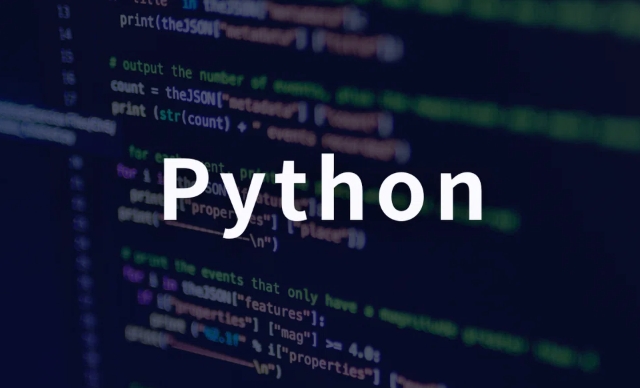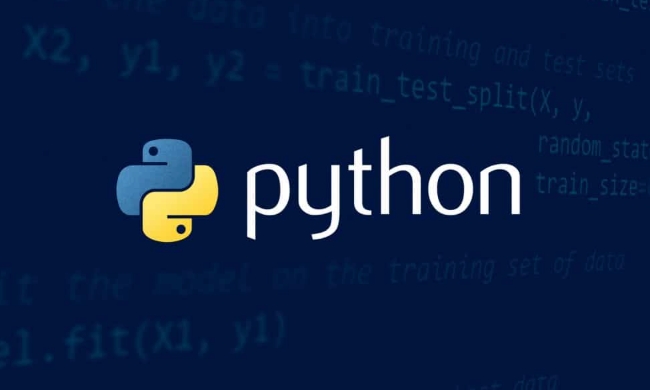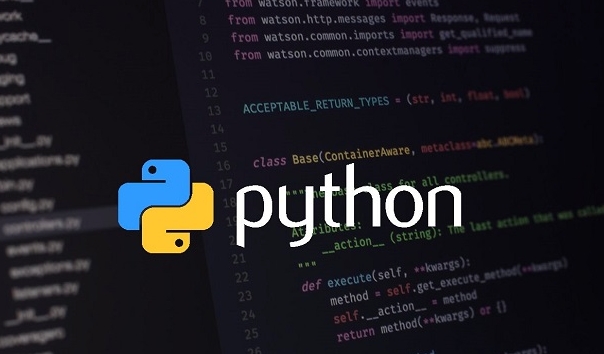NumPy arrays are better than Python lists in terms of efficiency and functionality. 1. NumPy array has continuous memory and fast access speed; 2. Supports vectorized operations, simplifying code and improving performance. Create arrays commonly used np.array(), np.zeros(), np.ones(), np.arange() and np.linspace(). View array information available for the .shape, .dtype, and .ndim properties. Basic operations include indexing and slicing, broadcasting mechanism, aggregation operations, deformation and splicing. Data types can be converted using .atype(), and memory management needs to be paid attention to. If slices are view rather than copying, modification will affect the original array. Selecting the appropriate data type can optimize memory footprint.

Python's NumPy library is a basic tool for numerical calculations, especially its array structure, which makes processing large amounts of data efficient and convenient. If you are doing data analysis, scientific computing or machine learning, you cannot avoid the use of NumPy arrays.

Why use NumPy array instead of lists?
Although Python native lists (lists) are flexible, they are not suitable for large-scale numerical operations. The advantages of NumPy arrays are mainly reflected in two aspects:

- High efficiency : Arrays are continuously stored in memory, and the access and operation speeds are far beyond the list.
- Many functions : supports vectorized operations, such as adding, subtracting, multiplication and division of the entire array without writing loops.
Let’s give a simple example: you have two lists of ten thousand numbers and want to add them one by one. If you use a list, you need to write a for loop, and if you use NumPy, you only need one. The code can be done with the number, and the code is simple and runs fast.
Therefore, when you process a little larger amount of data, or need to use mathematical operations, it is time to consider the NumPy array.

How to create and view basic information of an array?
The most common way to create an array is to use np.array() to convert the list into an array. In addition, there are several commonly used functions that are also very practical:
-
np.zeros()creates an array with all 0 -
np.ones()creates an array with all 1 -
np.arange()is similar to range, generating regular arrays -
np.linspace()generates arithmetic sequence
There are several key properties worth looking at in the array:
-
.shapeview array dimensions, for example(3,4)represents three rows and four columns -
.dtypeview data types, such asint64orfloat32 -
.ndimsees how many dimensions there are in the array. 1D is a vector and 2D is a matrix.
This information can help you quickly understand the status of the current array, especially when debugging or reading other people's code.
What are the basic operations of arrays?
Once an array is available, the most common operations include:
- Index and slice : Similar to list, but supports multiple dimensions, such as
arr[0, 1]to get elements in a two-dimensional array - Broadcasting mechanism : Arrays of different shapes can also be calculated, provided that the broadcast rules are met
- Aggregation operations : such as
np.sum(),np.mean(),np.max(), you can specify the axis direction - Deformation and splicing : For example,
reshape()changes shape,np.vstack()andnp.hstack()merge arrays
Among them, broadcasting is a very powerful feature. For example, you can add a scalar to the entire array without the need to construct an array of the same size. However, you should also note that it is easy to cause misunderstandings, especially when the shape is inconsistent, it is best to figure out the broadcast rules first.
What should I pay attention to when converting data types and memory management?
NumPy controls data types more strictly than Python. Sometimes you may need to explicitly convert the type, such as converting from an integer to a floating point type, you can use .astype() method.
In addition, NumPy arrays are stored continuously in memory, which means that some operations will copy data and some will not. For example:
- The slice operation does not copy data, but rather a view of the original array (view)
- If you call
copy(), you will actually copy a new copy of the data
If you are not careful about this, unexpected results may occur, such as modifying the slice content, resulting in the original array being also changed.
Another point is that the choice of data type will affect memory usage. For example, float32 takes up half of the space than float64 , and this difference is very important when dealing with large data sets.
Basically that's it. NumPy arrays look simple, but there are many details to pay attention to in actual use. It may feel troublesome when you first use it, but after you become proficient, you will find that it is almost an indispensable tool in numerical calculations.
The above is the detailed content of Numerical Computing with Python NumPy Arrays. For more information, please follow other related articles on the PHP Chinese website!

Hot AI Tools

Undress AI Tool
Undress images for free

Undresser.AI Undress
AI-powered app for creating realistic nude photos

AI Clothes Remover
Online AI tool for removing clothes from photos.

Clothoff.io
AI clothes remover

Video Face Swap
Swap faces in any video effortlessly with our completely free AI face swap tool!

Hot Article

Hot Tools

Notepad++7.3.1
Easy-to-use and free code editor

SublimeText3 Chinese version
Chinese version, very easy to use

Zend Studio 13.0.1
Powerful PHP integrated development environment

Dreamweaver CS6
Visual web development tools

SublimeText3 Mac version
God-level code editing software (SublimeText3)
 How to handle API authentication in Python
Jul 13, 2025 am 02:22 AM
How to handle API authentication in Python
Jul 13, 2025 am 02:22 AM
The key to dealing with API authentication is to understand and use the authentication method correctly. 1. APIKey is the simplest authentication method, usually placed in the request header or URL parameters; 2. BasicAuth uses username and password for Base64 encoding transmission, which is suitable for internal systems; 3. OAuth2 needs to obtain the token first through client_id and client_secret, and then bring the BearerToken in the request header; 4. In order to deal with the token expiration, the token management class can be encapsulated and automatically refreshed the token; in short, selecting the appropriate method according to the document and safely storing the key information is the key.
 Explain Python assertions.
Jul 07, 2025 am 12:14 AM
Explain Python assertions.
Jul 07, 2025 am 12:14 AM
Assert is an assertion tool used in Python for debugging, and throws an AssertionError when the condition is not met. Its syntax is assert condition plus optional error information, which is suitable for internal logic verification such as parameter checking, status confirmation, etc., but cannot be used for security or user input checking, and should be used in conjunction with clear prompt information. It is only available for auxiliary debugging in the development stage rather than substituting exception handling.
 What are Python type hints?
Jul 07, 2025 am 02:55 AM
What are Python type hints?
Jul 07, 2025 am 02:55 AM
TypehintsinPythonsolvetheproblemofambiguityandpotentialbugsindynamicallytypedcodebyallowingdeveloperstospecifyexpectedtypes.Theyenhancereadability,enableearlybugdetection,andimprovetoolingsupport.Typehintsareaddedusingacolon(:)forvariablesandparamete
 How to iterate over two lists at once Python
Jul 09, 2025 am 01:13 AM
How to iterate over two lists at once Python
Jul 09, 2025 am 01:13 AM
A common method to traverse two lists simultaneously in Python is to use the zip() function, which will pair multiple lists in order and be the shortest; if the list length is inconsistent, you can use itertools.zip_longest() to be the longest and fill in the missing values; combined with enumerate(), you can get the index at the same time. 1.zip() is concise and practical, suitable for paired data iteration; 2.zip_longest() can fill in the default value when dealing with inconsistent lengths; 3.enumerate(zip()) can obtain indexes during traversal, meeting the needs of a variety of complex scenarios.
 What are python iterators?
Jul 08, 2025 am 02:56 AM
What are python iterators?
Jul 08, 2025 am 02:56 AM
InPython,iteratorsareobjectsthatallowloopingthroughcollectionsbyimplementing__iter__()and__next__().1)Iteratorsworkviatheiteratorprotocol,using__iter__()toreturntheiteratorand__next__()toretrievethenextitemuntilStopIterationisraised.2)Aniterable(like
 Python FastAPI tutorial
Jul 12, 2025 am 02:42 AM
Python FastAPI tutorial
Jul 12, 2025 am 02:42 AM
To create modern and efficient APIs using Python, FastAPI is recommended; it is based on standard Python type prompts and can automatically generate documents, with excellent performance. After installing FastAPI and ASGI server uvicorn, you can write interface code. By defining routes, writing processing functions, and returning data, APIs can be quickly built. FastAPI supports a variety of HTTP methods and provides automatically generated SwaggerUI and ReDoc documentation systems. URL parameters can be captured through path definition, while query parameters can be implemented by setting default values ??for function parameters. The rational use of Pydantic models can help improve development efficiency and accuracy.
 How to test an API with Python
Jul 12, 2025 am 02:47 AM
How to test an API with Python
Jul 12, 2025 am 02:47 AM
To test the API, you need to use Python's Requests library. The steps are to install the library, send requests, verify responses, set timeouts and retry. First, install the library through pipinstallrequests; then use requests.get() or requests.post() and other methods to send GET or POST requests; then check response.status_code and response.json() to ensure that the return result is in compliance with expectations; finally, add timeout parameters to set the timeout time, and combine the retrying library to achieve automatic retry to enhance stability.
 Python variable scope in functions
Jul 12, 2025 am 02:49 AM
Python variable scope in functions
Jul 12, 2025 am 02:49 AM
In Python, variables defined inside a function are local variables and are only valid within the function; externally defined are global variables that can be read anywhere. 1. Local variables are destroyed as the function is executed; 2. The function can access global variables but cannot be modified directly, so the global keyword is required; 3. If you want to modify outer function variables in nested functions, you need to use the nonlocal keyword; 4. Variables with the same name do not affect each other in different scopes; 5. Global must be declared when modifying global variables, otherwise UnboundLocalError error will be raised. Understanding these rules helps avoid bugs and write more reliable functions.






